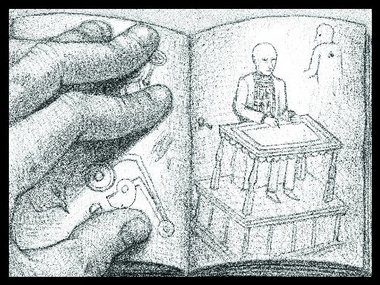In a review in
The New York Times, Manohla Dargis sees Scorsese as locating "plenty
of cinematic poetry here, particularly in the clock imagery, which comes
to represent moviemaking itself. The secret is in the clockwork, Hugo's
father says to him in flashback, sounding like an auteurist. Time counts
in Hugo, yes, but what matters more is that clocks are wound and
oiled so tht their numerous parts work together as one. The movie itself
is a well-lubricated machine, a trick entertainment and a wind-up toy, and
it springs to life instantly in a series of opening aerial shots that plunge
you into the choreographed bustle of the train station."
![]()

![]()


